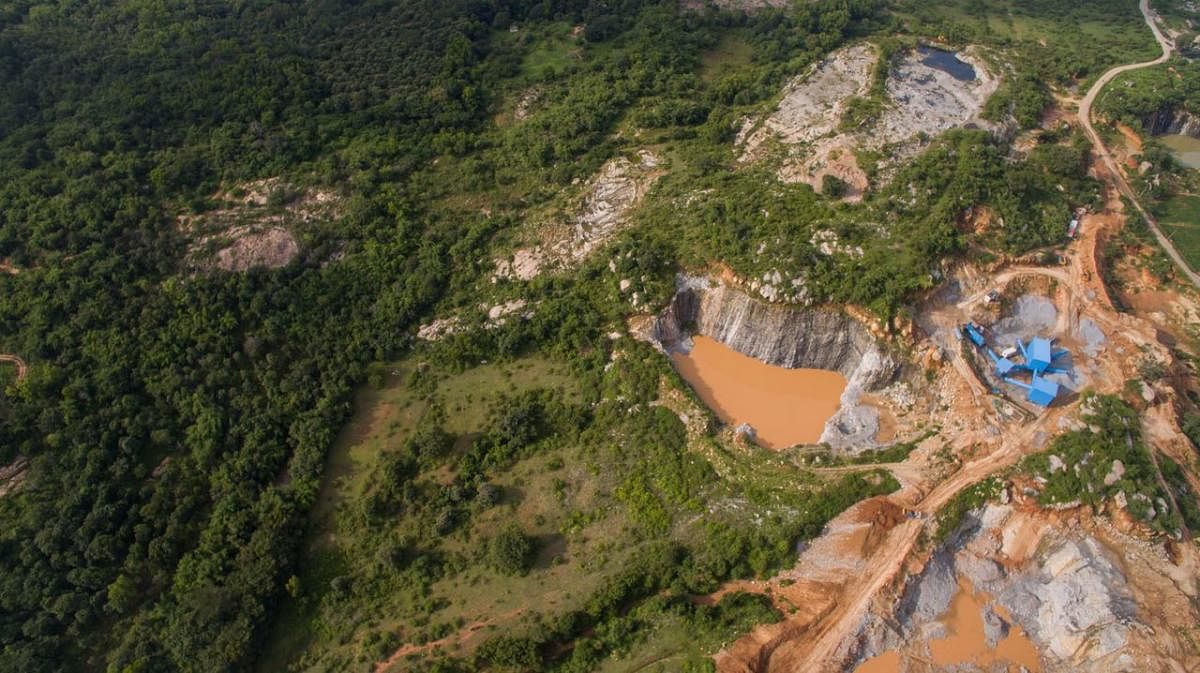
As the clamour to save Bandipur Tiger Reserve reached a crescendo about a month ago, the state government, alarmed by the intensity of public angst and widespread outburst, played to the gallery and ‘declared’ that it is committed to protecting the forests of Karnataka. But, a month down the lane after the tweet by Chief Minister H D Kumaraswamy, the true colour of the government has come to the fore with its ‘recommendation’ to the centre to reduce the extent of the eco-sensitive zone (ESZ) around the Bannerghatta National Park (BNP) and notify the same subsequently.
Even though the issue has now snowballed into a controversy and brought the citizens together, to save a major chunk of lung space abutting Bengaluru, the government has conveniently remained tight-lipped on the issue. Interestingly, the state government, which refused to part even an inch of the land in Bandipur for linear projects, has not only proposed reduction of ESZ by 100 sq km but also cleverly shielded pockets of stone quarrying and granite mining by keeping them out of the purview of ESZ regulations.
Conservationists who are now rallying against the decision alleging that the state government deliberately allowed the previous notification that earmarked up to 4.5 km area as ESZ to lapse so that it can come up with a fresh notification at the whims of the thriving real estate lobby in the region, besides the influential mines and quarry industries.
Vested interests
Neither the notification issued by the Government of India in June 2016 nor the one issued in November 2018 explains why the state government chose to propose either the 100 m to 4.5 km (2016) or 100 m to 1 km (2018). As there are only a few days left for the December 30 deadline after which the same will be notified permanently, the activists are even considering challenging the same at the High Court and the Supreme Court.
“The Supreme Court, in the absence of a notified ESZ area by the state, had ruled that the 10 km area around the National Park would by default become ESZ areas. If the state has decided to reduce it any further, it should have listed out the reasons for the same. After suggesting to keep the extent of ESZ to 4.5 km, reducing it to a mere one km in less than two years of time further reveals that the government is strongly influenced by the powerful and thriving real estate lobby in the region,” explains Vijay Nishanth, a conservationist.
Seeking clarity on the government’s rationale behind fixing 4.5 km in 2016 and one kilometre in 2018, DH approached several IFS officers, both serving and retired. While the serving officials maintained that it was the government’s decision, some retired officials pointed fingers at politicians at whose behest they were forced to reduce the area in the past.
“We could have stuck to the 10 km ESZ rules as suggested by the EC. But, considering the fast-paced growth of Bengaluru, we proposed 100 mtr to 4.5 km as the extent of ESZ. Even though a few of the then cabinet ministers had forced us to keep it at just 100 mtr, we refused to budge and recommended 4.5 km area. But as the days passed by, the government did not communicate any further allowing it to lapse on its own so that it came up with another notification restricting it to just 1 km,” explained a retired IFS officer who was privy to the decision then.
As conceived by the government at the behest of its influential and powerful ministers, the ESZ area notified in November has shrunk alarmingly along its northern boundary where the real estate lobby and illegal granite and quarrying lords rule the roost.
Abutting the adjoining Kanakapura, Anekal and Bengaluru South assembly constituencies in the north, the BNP is under severe stress due to the multiple projects floated by the real estate tycoons and rapacious activities of the mining lords.
In fact, Bengaluru’s realty sector after gulping away prime chunks of land in east and north has set its eyes on the verdant south pockets strewn between Bannerghatta and Kanakapura roads. Works on projects ranging from group housing to townships have been in full swing attesting the concerns of conservationists.
“While the previous draft included a whopping 147 villages under the ESZ area, the latest has only 77 villages falling under the ESZ area. If you compare the ESZ maps of both 2016 and 2018, there are several serious lapses on the part of the government. Island-like revenue pockets in the middle of ESZ territory which are predominantly dotted with quarries and granite mines have been kept out of ESZ. What scientific reason explains this kind of decision? If the government is not willing even to spare about 5 km area around a national park it is as good as not having the park itself,” reacted a conservationist, who preferred to remain anonymous.
The activists have also criticised the state government’s safe zone order issued in 1991 suggesting one-kilometre area around the park as the safer zone. “The guidelines issued by the Supreme Court to declare the ESZ are very clear. However, none of these is adhered to by the state government. One of the guidelines says that in case of sensitive corridors, even if ecologically important patches crucial for linkage are beyond 10 km width, they shall be included within the ESZ. But in Bannerghatta, which forms the link between Cauvery Wildlife Sanctuary in both Karnataka and Tamil Nadu, the inclusion of a mere one kilometre as ESZ does not serve any purpose.
The Karnataka High Court has also come up with guidelines protecting the interests of elephant corridors. Bannerghatta which is used by hundreds of elephants every year is a prime elephant corridor and declaring ESZ of just one kilometre will only further intensify the human-animal conflict in the area,” opined yet another conservationist who was previously involved with programmes of Ministry of Environment, Forest and Climate Change.
Managing to get their business through, several quarry and crushing firms have damaged the ecosystem beyond repair within the safe zone area. Quarries and crushers operating around Giddenahalli have been dumping debris and other waste on the government land abutting the Ulukere Halla, which is a small stream. The reckless dumping of garbage into the stream directly, according to BNP officials, has not only affected the inflow of water into various water bodies within the park but also left them intensely polluted.
Clarifying on the ESZ confusion, C Jayaram, Principal Chief Conservator of Forests (Wildlife) said that it is up to the central government to decide on it. “Any objections or suggestions have to be sent to the Centre and we will abide by it.”
